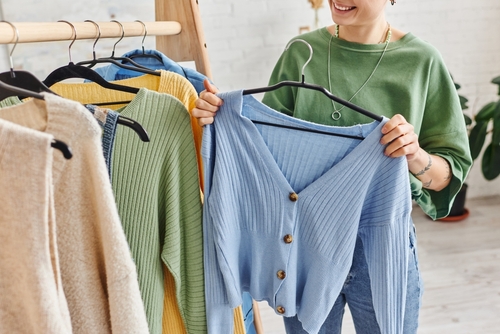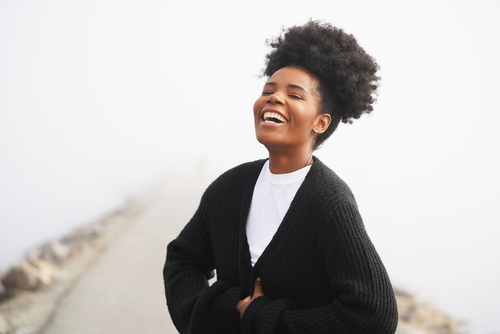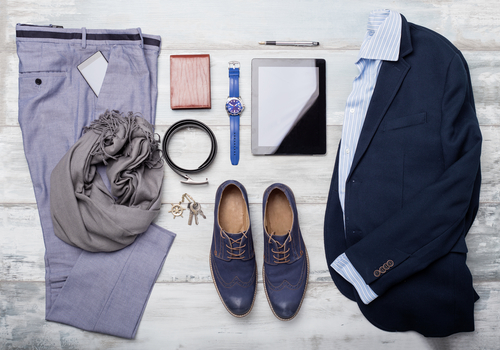“Business casual” is a phrase that most people know, but it can be surprisingly difficult to fully define. The expectations seem to shift depending on who you ask, where you work, or even the day of the week. One person’s “smart and polished” might be another’s “too formal.” The truth is, it often depends on the country, industry, and even specific company culture.
In this Remitly guide, we’ll explain what business casual typically means, why it matters, and how to strike the right balance between comfort and professionalism. We’ll look at examples of what people might wear, what to avoid, and answer some of the most common questions about dress codes.
What is business casual, really?
Business casual falls between professional and casual. It’s not the full suit-and-tie world of traditional corporate offices, but it’s also not as laid-back as jeans and sneakers. Think of it as dressing to meet a client without looking like you’re heading to a high-stakes board meeting.
A business casual outfit might include dress pants and a button-down shirt, or a blouse and skirt. The goal is to look professional yet approachable and comfortable.
Still, the definition can vary widely depending on your industry, company culture, and region. A startup in San Francisco may have a looser interpretation than a financial firm in New York. Even within the same organization, expectations might differ between departments.
A good rule of thumb is when in doubt, dress slightly more formally than you think you need to. Ultimately, business casual means you’re showing respect for your workplace and colleagues while staying comfortable enough to perform at your best.
Business casual for men: key pieces
For men, the business casual dress code is all about clean lines, thoughtful colors, and a tailored fit. The goal isn’t to look flashy, but to appear neat, confident, and intentional.
Some key business casual pieces might include:
- Tops: Collared shirts, polos, sweaters, and cardigans
- Bottoms: Chinos, khakis, and dress pants in neutral tones
- Outerwear: Blazers or sport coats to instantly sharpen your look
- Footwear: Loafers, Oxfords, brogues, or, depending on company culture, clean leather sneakers

Start with the basics. Collared shirts like crisp button-downs or polos are always a safe bet. They pair well with chinos, khakis, or dress pants in classic shades such as black, gray, navy, or beige. To add comfort and texture, layer a sweater (crewneck or V-neck) or a lightweight cardigan over your shirt, especially in cooler months.
When you need to elevate your outfit, a blazer or sport coat works well, adding structure without the stiffness of a full suit. When it comes to footwear, choose loafers, Oxfords, brogues, or clean, minimalist leather sneakers.
Keep accessories understated: a simple leather belt, a classic watch, and well-groomed hair or facial hair are usually enough.
In short, business casual for men means dressing in a way that shows you care about your appearance, but without the formality of a full suit and tie.
Business casual for women: key pieces
For women, there are more styles available, which can make it a little trickier to interpret. The goal is the same: to look professional, comfortable, and modest, so you can feel confident in any workplace setting.
Some key pieces might include:
- Tops: Blouses, button-down shirts, and quality knit sweaters. Sleeveless tops with wide straps may be fine in many workplaces, especially when paired with a blazer or cardigan.
- Bottoms: Dress pants, chinos, tailored trousers, and skirts or dresses that feel appropriate for the workplace
- Outerwear: Cardigans, blazers, and structured jackets that pull your look together
- Footwear: Flats, loafers, low heels, wedges, and ankle boots for all-day comfort

Start with the basics. Blouses, silk shirts, and high-quality knit sweaters are timeless and versatile choices that work in most environments. They can be tucked into trousers or skirts to create a refined look. Sleeveless tops are acceptable in many offices if they have wide shoulder straps and aren’t revealing; keeping a cardigan or blazer handy is a good idea for cooler spaces or more formal meetings.
For bottoms, dress pants, chinos, and tailored trousers are go-to options for a business casual wardrobe. Skirts and dresses are also a great choice; many workplaces prefer knee- or midi-length, but the right length will depend on your comfort and company norms.
Outerwear plays a supporting role but can make a big difference. Cardigans, blazers, and structured jackets instantly elevate an outfit, adding a layer of formality when needed. A well-fitted blazer, in particular, can make even casual separates look intentional and office-ready.
Choose footwear that balances style and practicality. Flats, loafers, low heels, wedges, and ankle boots are all versatile options depending on your outfit and the season.
In essence, the business casual wardrobe for women revolves around mix-and-match staples: pieces that make you feel comfortable and confident no matter what your workday brings.
What NOT to wear for business casual
Whether you’re starting out in the workforce or looking for a new position, it helps to remember that even with the freedom that business casual offers, there are still boundaries. Certain items simply don’t fit the balance between relaxed and professional that this dress code aims for.
Here’s what to generally avoid:
- Too casual items: T-shirts with large logos or graphics, ripped or distressed jeans, athletic wear (like sweatpants or hoodies), shorts, and flip-flops
- Overly revealing or informal tops: Tank tops, strapless tops, or anything very low-cut unless layered appropriately
- Very short hemlines: Skirts or dresses that are closer to party wear than office wear
- Overly casual or worn shoes: Running shoes, overly casual sandals, very high heels (stilettos)
By skipping these items, you’ll keep your look polished and appropriate while still enjoying the comfort and flexibility that business casual allows. A good rule of thumb is simple: If you’d wear it to the gym, the beach, or a nightclub, it’s probably not business casual. Dressing thoughtfully shows respect for your workplace and helps you project confidence every day.
Putting it all together: outfit examples
Whether you’re upgrading your wardrobe or looking for a role that better fits your lifestyle, sometimes it helps to picture a complete outfit rather than individual items. Let’s look at a few examples.
Example outfit 1:
A light blue button-down shirt tucked into navy chinos with brown leather loafers. The outfit is relaxed but tidy, perfect for a regular day at the office. For a more formal meeting, consider adding a gray blazer for structure.
Example outfit 2:
A cream-colored blouse paired with black tailored trousers and pointed-toe flats. A cardigan adds warmth, while a structured handbag can add a finishing touch. Dress it up with a blazer and delicate jewelry or keep it simple for a casual workday.
Example outfit 3:
A gray knit sweater with black chinos and clean, minimalist sneakers. This gives a comfortable and modern look that’s great for workplaces with a more relaxed business casual culture. A lightweight blazer or structured jacket can refine the look.
In all three cases, the principle is the same: Each element looks deliberate, fits well, and contributes to a cohesive whole. The result is confident professionalism that fits any setting.

Making business casual work for you
The phrase “business casual” may sound vague at first, but once you understand its purpose, it becomes much easier to navigate. The goal isn’t to follow a strict formula—it’s to look polished, confident, and comfortable without the rigidity of full business attire. Observing what your managers and coworkers wear can give you a sense of what’s appropriate for your place of work.
When dressing business casual, remember three simple principles:
- Fit matters most. Clothes that fit well always look more professional.
- Quality over quantity. Prioritize versatile, well-made pieces that feel good to wear.
- Read the room. When unsure, start with a slightly more polished look and then adjust based on your environment.
Remember that your outfit sends a message before you say a word. A thoughtful, well-chosen business casual look tells your colleagues and clients that you take your work seriously.
FAQs
Are jeans business casual?
That depends on your company. In many workplaces, dark, well-fitted jeans are acceptable if they’re free from rips, holes, or distressing. Light-wash jeans or trendy oversized cuts, however, usually don’t fit the business casual dress code. When you’re uncertain, chinos or dress pants are a safe choice.
Are sneakers acceptable in a business casual setting?
Sometimes. If your office is more relaxed, you might be able to wear clean, minimalist sneakers made of leather or suede. Avoid bright colors or athletic styles meant for running or sports.
How does business casual change in the summer?
During warm months, lightweight fabrics like linen, cotton, and blends that breathe easily are ideal. Many offices allow short-sleeved button-downs, polo shirts, or sleeveless blouses with wider straps. Dresses and skirts in lightweight materials can also be great options. Shorts, however, typically don’t fall under business casual in most office settings.
